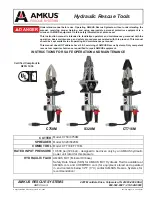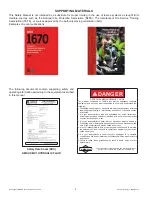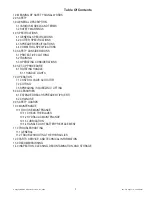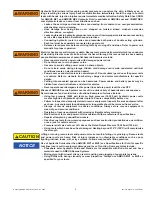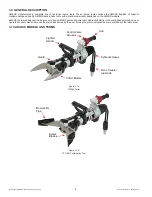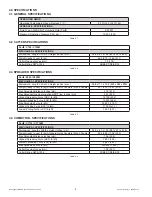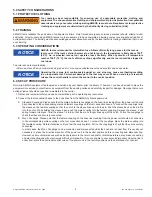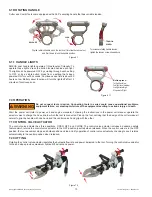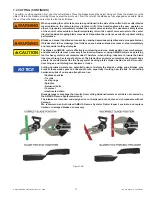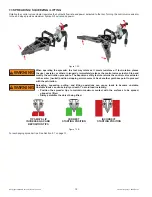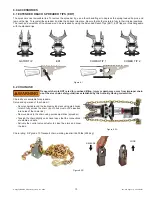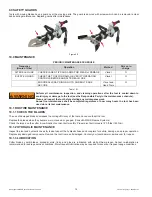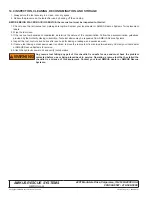
©Copyright AMKUS Rescue Systems, Inc. 2020
LAL-001 August 11, 2020 Rev01
14
9.0 SAFETY GUARDS
Tools with moving blades have a guard over the moving parts. The guard is secured with screws which can be removed to clear
debris during maintenance. Replace guards after maintenance.
Figure 9.0
10.0 MAINTENANCE
PERIODIC MAINTENANCE SCHEDULE
Frequency
(Hours of Use)
Operation
Method
Person in
charge
AFTER EACH USE
CHECK BLADES, TIPS AND ARMS FOR WEAR or DAMAGE
Visual
O
EVERY 8 HOURS
CHECK THE TOOL FOR DAMAGE, VERIFY OPERATING
CONTROLS BEFORE AND AFTER EACH USE
Visual
O
ENSURE ALL SNAP RINGS, NUTS, AND BOLTS ARE
SECURE
Visual and
Hand Tools
O
Table 10.1
WARNING
Perform all maintenance, inspection, and cleaning operations after the tool is cooled down to
avoid injury or damage to the tool (see the Responsible Party in the maintenance schedule).
Clean and inspect the tool before starting any maintenance work.
Annual tool maintenance shall be completed regardless of how many hours the tool has been
used since its last maintenance.
10.1 ROUTINE MAINTENANCE
10.1.1 CHECK THE BLADES
The use of damaged blades decreases the cutting e
ffi
ciency of the tool and can overheat the tool.
Replace the blades when they become worn, cracked, or gouged. (Consult AMKUS Rescue Systems)
Check the torque on the cutter & combination tool pivot bolt monthly. Proper pivot bolt torque is 120 ft-lbs (163 N-m).
10.1.2 HYDRAULIC MAINTENANCE
Inspect the tool and hydraulic hoses for leaks. Inspect the hydraulic hoses and couplers for debris, damage, and proper operation.
Replace any damaged components. Remove the tool from use if damaged. Contact your local dealer or amkus.com for repairs.
10.1.3 LUBRICATION
Cutter blades, combi blades, spreader arms, links, and pins are lubricated with white lithium grease. Annual re-lubrication is
recommended for average service conditions. More frequent lubrication may be required for severe or frequent usage conditions.

